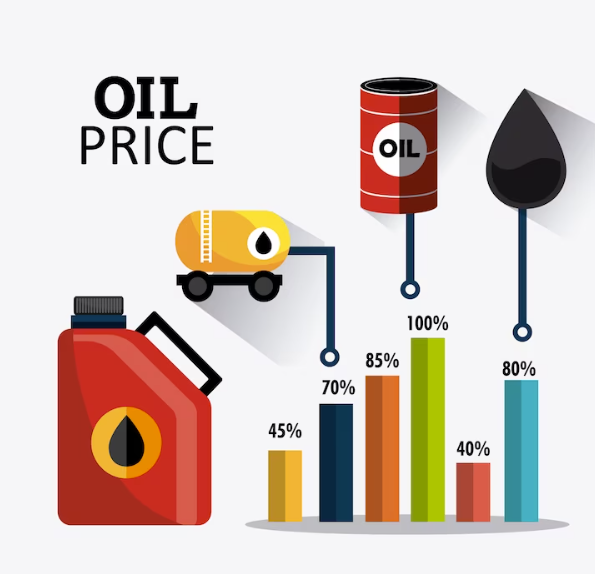OPEC Boosts 2023 Oil Demand Forecast Amid Strong Chinese Demand

The global oil market is a buzz with new developments as the Organization of the Petroleum Exporting Countries (OPEC) announces a substantial increase in its projection for oil demand growth in 2023. This upward revision, amounting to an additional 100,000 barrels per day (bpd), brings the estimated daily oil demand increase to an impressive 2.4 million bpd. OPEC's recent shift in outlook is primarily attributed to China's robust appetite for oil during the June quarter, a revelation unveiled in the cartel's July Oil Market Report.
What Is Oil Price Forecasting?
The oil price prediction is influenced by a multitude of factors, including geopolitical events, supply and demand dynamics, production capacity, and global economic conditions. Accurate price forecasting of oil is a challenging endeavor due to the volatility and interconnected nature of the global oil market.
China's Demand Dynamo
Amid the intricate web of factors shaping the world's energy landscape, China has emerged as a leading influencer in the realm of oil demand. OPEC's upward adjustment of global demand is significantly influenced by China's escalating need for oil, particularly noticeable in the second quarter of 2023. The report highlights a substantial year-on-year growth in China's oil demand for both April and May, underpinning the revision.
Moreover, this surge in oil requirements isn't limited to China alone. The United States and Latin America have also shown promising signs of improved oil needs, adding further impetus to the global oil demand growth projection.
Rising Stars: OECD Americas and Non-OECD Growth
The Organization for Economic Cooperation and Development (OECD) Americas region is positioned to experience the most remarkable surge in oil demand for 2023. Spearheaded by the United States, this upswing is fueled by a resurgent demand for jet fuel and advancements in gasoline needs. This projection indicates a strong rebound from the challenging times brought by the pandemic, underscoring the region's capacity for resilience and recovery.
On a global scale, non-OECD countries are set to showcase their demand prowess, with crude oil needs predicted to surge by a significant 2.4 million bpd. This surge would not only surpass pre-pandemic demand levels in 2019 but also underscore the substantial growth in oil consumption witnessed across transportation and industrial sectors. Notably, this growth momentum is propelled by the resurgence of economic activities, especially in China and other non-OECD regions.
2024: The Growth Continuum
Peering into the crystal ball of oil demand, OPEC's foresight extends into 2024, projecting a further 2.2 million bpd surge in global demand. At the heart of this growth lies China, once again positioned as a key driver. The report envisions a twofold increase in oil demand from China, propelling the demand trajectory upward.
The United States is not far behind on this journey to recovery. As the nation's jet fuel demand bounces back and gasoline and light distillate consumption improves, oil demand is anticipated to hit pre-pandemic levels in the coming year.
OPEC's Role and Self-Demand Dynamics
OPEC, as a central player in the oil market, is also attuned to the evolving dynamics. For this year, OPEC anticipates its own crude oil demand to reach 29.4 million bpd, a revision upward by 100,000 bpd from the previous projection. Looking ahead to 2024, the cartel envisions a demand spike of 800,000 bpd, culminating in a demand figure of 30.2 million bpd.
Non-OPEC Production and the Ongoing Balancing Act
Shifting the spotlight to non-OPEC players, OPEC's insights highlight a growth trajectory of 1.4 million bpd in oil production from countries outside its alliance for 2023. This growth aligns with the trend of expanding production witnessed across non-OPEC regions.
The June production figures underscore the dynamic nature of the oil market, with OPEC collectively producing 28.19 million bpd of crude oil. Saudi Arabia, a prominent OPEC member, registered an increase in production by 22,000 bpd, reaching a monthly production of 10.0 million bpd.
Troubled Waters: OPEC's Strategy and Oil Prices
In a market sensitive to economic concerns and fluctuating demand, OPEC's strategic decisions have far-reaching consequences. Acknowledging the need for stable oil prices, OPEC and its allies opted to extend existing production cuts, amounting to 3.66 million bpd, until the close of 2023. Saudi Arabia, taking a leadership role, volunteered to reduce its own production by an additional 1 million bpd in July, an initiative subsequently extended into August. These actions reflect the delicate balance OPEC strives to maintain between supply, demand, and market stability.
A Glimmer of Hope: Market Response
As the ink dries on OPEC's insights, the oil market echoes the sentiment of cautious optimism. The price of West Texas Intermediate (WTI) crude oil and Brent crude oil, traded on the Intercontinental Exchange, showcased marginal increases from the previous close, underscoring a tentative positive response to OPEC's projections.
Stockpiles and the Road Ahead
Beyond the demand-supply seesaw, OPEC's report shines a light on crude oil stockpiles. In May, OECD countries observed a 20.2 million-barrel increase, pushing the stockpile to 2.82 billion barrels. Despite this uptick, the figures remain significantly lower than the 2015-2019 average, offering a glimpse of the evolving oil landscape.
In conclusion, OPEC's revised projections for 2023 oil demand growth, driven by China's robust requirements and recovery in various regions, depict a dynamic and resilient oil market. As the world inches towards 2024, with China and the United States at the helm of demand resurgence, OPEC's strategies to balance production and demand will play a pivotal role in shaping the future of the global oil economy.